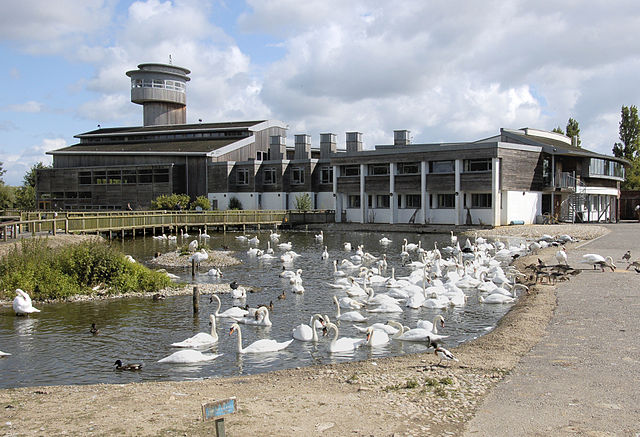The taiga bean goose is a goose that breeds in northern Europe and Asia. It is migratory and winters further south in Europe and Asia. This and the tundra bean goose are recognised as separate species by the American Ornithological Society and the International Ornithologists' Union, but are considered a single species by other authorities. The taiga and tundra bean goose diverged about 2.5 million years ago and established secondary contact c. 60,000 years ago, resulting in extensive gene flow.
Taiga bean goose
Taiga bean goose (Anser fabalis sensu stricto) in the background, tundra bean goose (Anser serrirostris) in the foreground and greylag goose (Anser anser) on the right, at Spaarndam, North Holland, the Netherlands
Egg at Museum Wiesbaden, Germany
WWT Slimbridge is a wetland wildlife reserve near Slimbridge in Gloucestershire, England. It is midway between Bristol and Gloucester on the eastern side of the estuary of the River Severn. The reserve, set up by the artist and naturalist Sir Peter Scott, opened in November 1946. Scott subsequently founded the Wildfowl & Wetlands Trust, which has since opened nine other reserves around the country. Slimbridge comprises some 800 hectares of pasture, reed bed, lagoon and salt marsh. Many water birds live there all year round, and others are migrants on their ways to and from their summer breeding grounds. Other birds overwinter, including large numbers of white-fronted geese and increasing numbers of Bewick's swans.
Slimbridge has numerous nene (also known as Hawaiian geese), the rarest goose in the world.
Peter Scott at Slimbridge, 1954
A late spring view across a small part of the centre, from the Severn View observation tower
The main buildings and Severn View observation tower in July. The majority of the birds are mute swans







